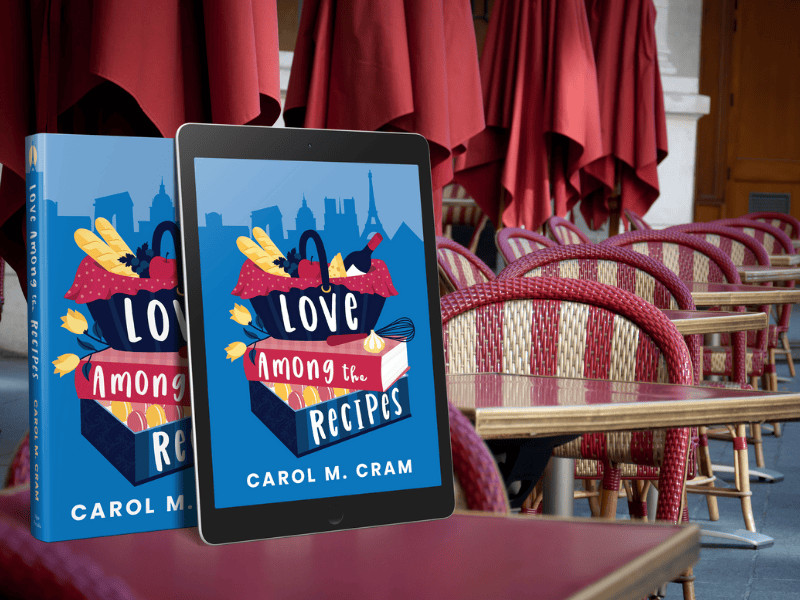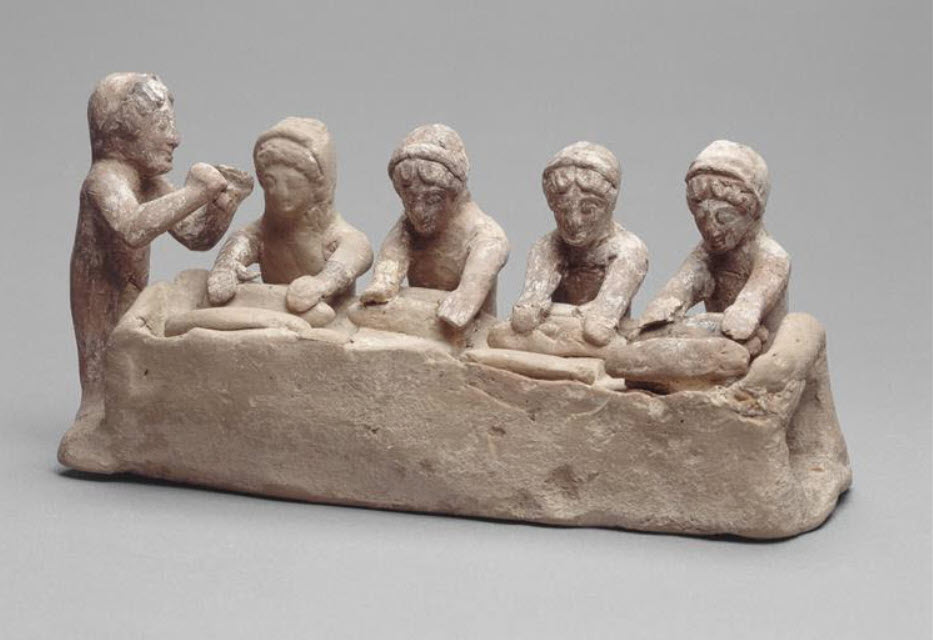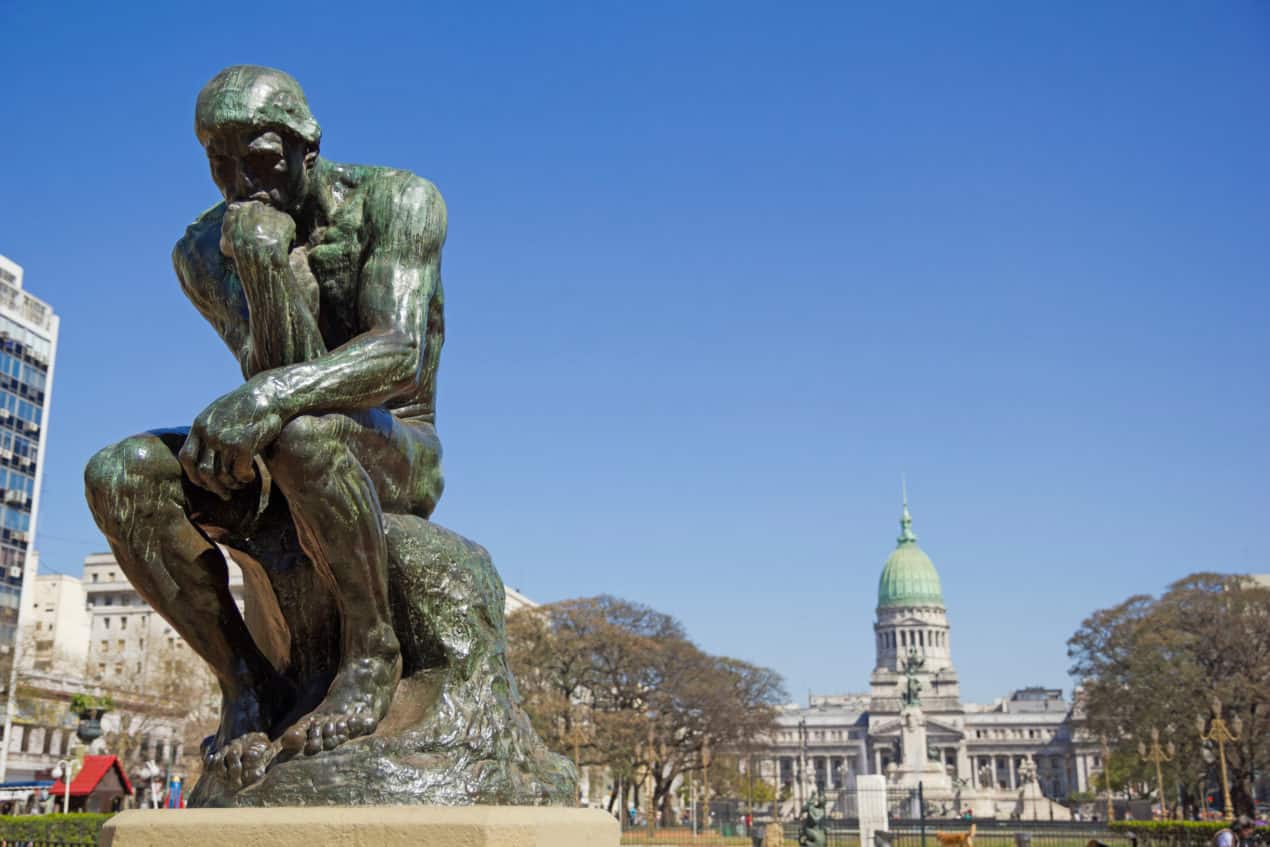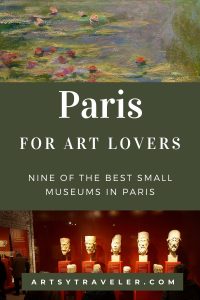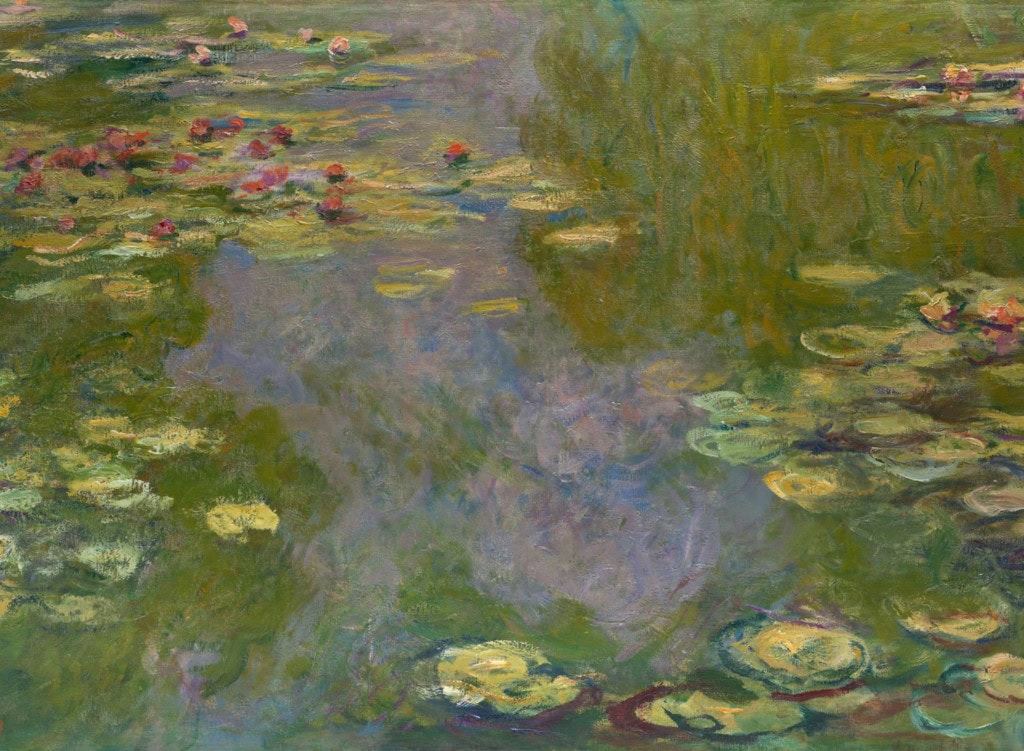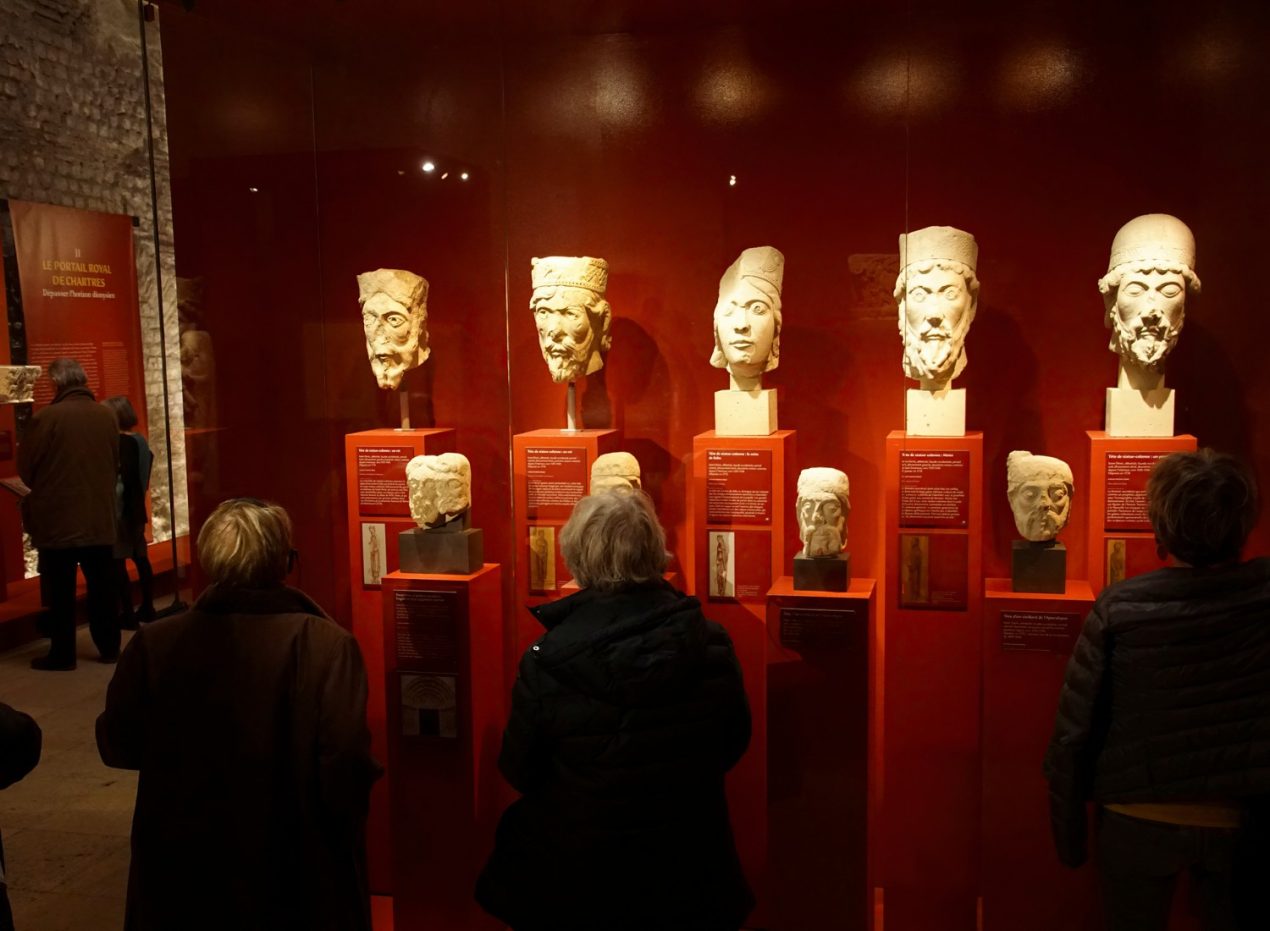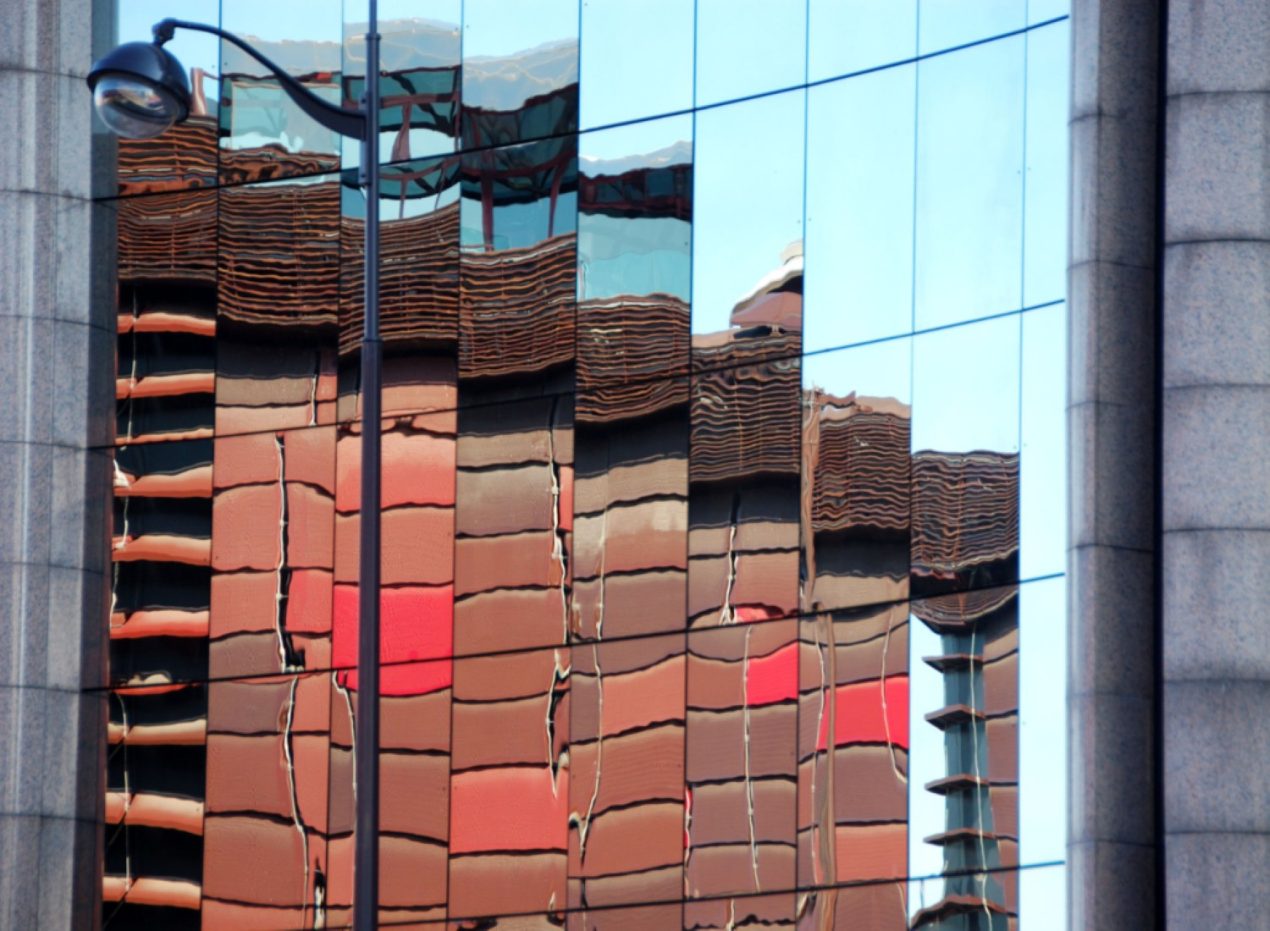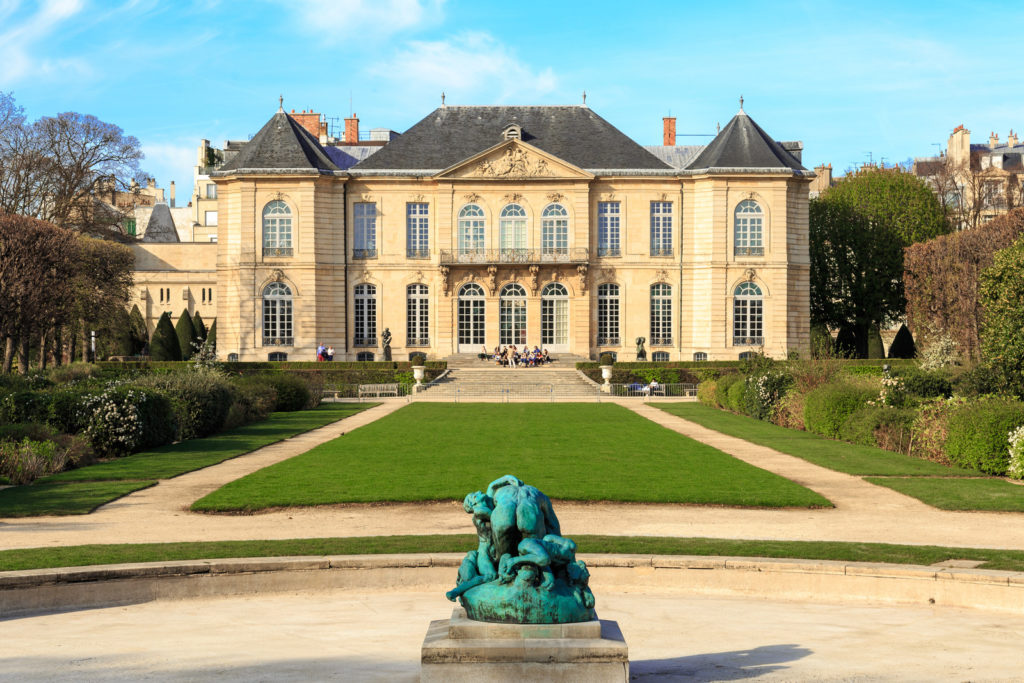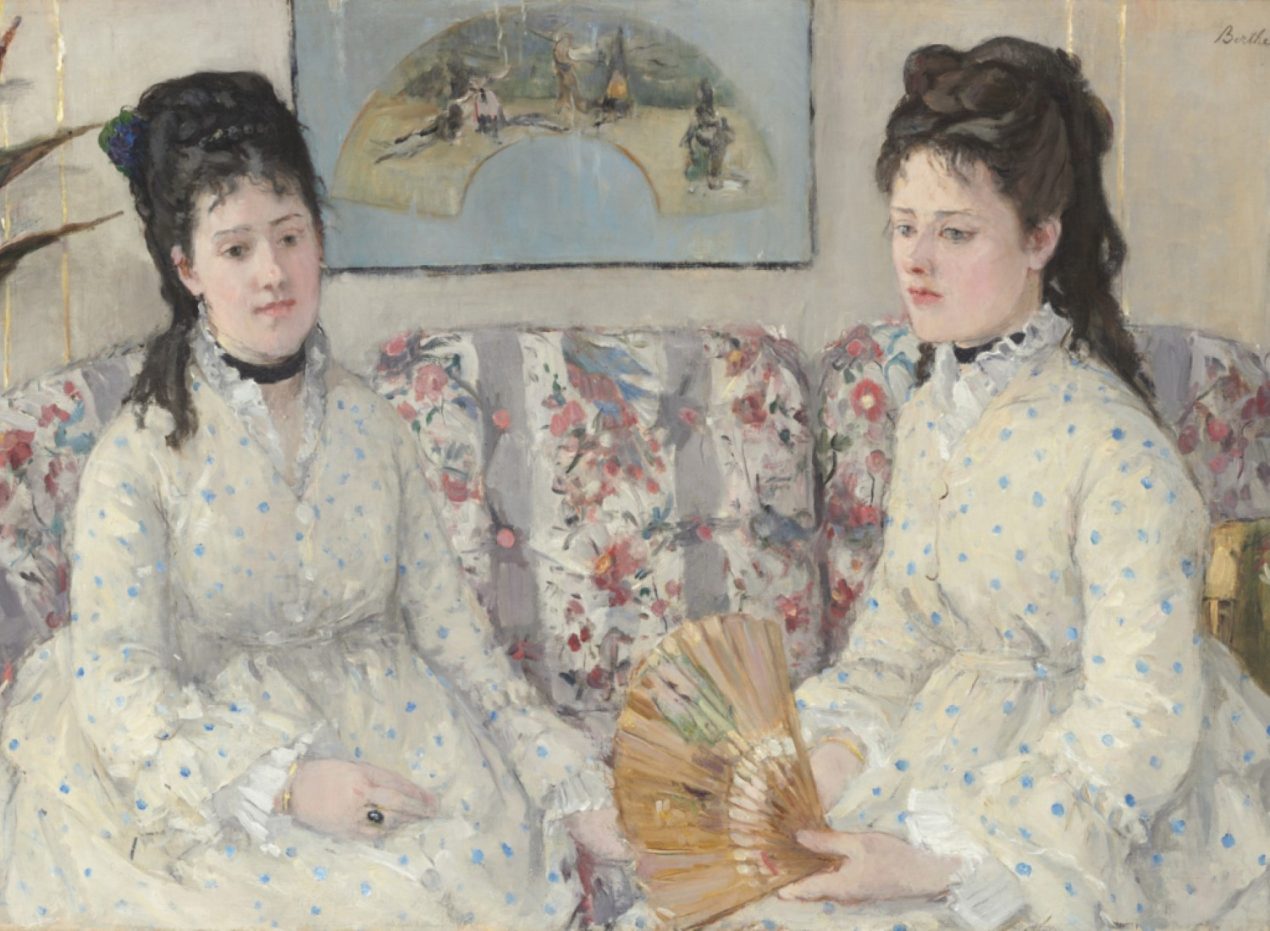Love Among the Recipes: Paris Sights & Bistro Dishes
I love Paris so much that I set my fourth novel there. Love Among the Recipes is about a cookbook author who reinvents herself by moving to Paris. The novel is also my love letter to Paris–one of my favorite cities in the world.
In Love Among the Recipes, cookbook author Genna McGraw writes a cookbook/guidebook that matches Parisian sights such as the Eiffel Tower with recipes for bistro-style French dishes such as steak haché.
The next time you visit Paris, use this post to visit the places featured in Love Among the Recipes. Included are descriptions of the sights along with links to some of their matched recipes.
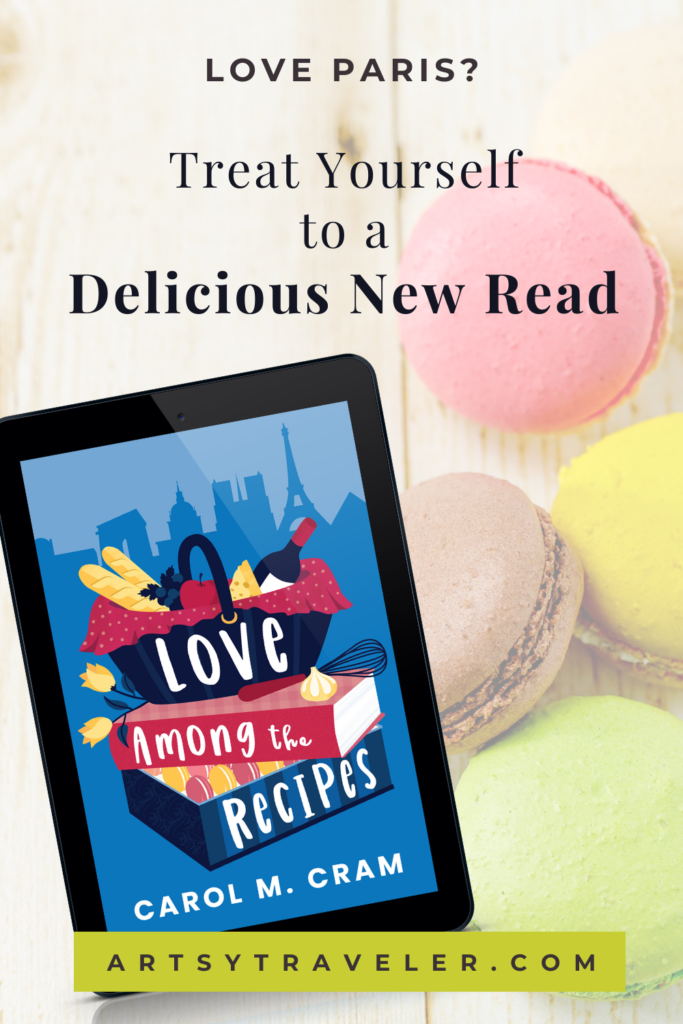
Monuments in Love Among the Recipes
Eiffel Tower
No visit to Paris is complete without a visit to the Eiffel Tower! This iconic monument symbolizes the City of Light. For the most romantic experience, ascend the Eiffel Tower at night.
In Love Among the Recipes, the Eiffel Tower is the first sight Genna visits soon after her arrival in Paris. From the second level, she enjoys both the view and the passing parade of tourists. She also comes up with the idea for the first recipe for her cookbook/guidebook–Steak Haché et Frites.
Here’s how Genna describes this staple of the menu enfant–the children’s menu:
One beef patty, grilled and crispy, accompanied by a mound of light, hot, salty, and crunchy french fries—the best fries in the world. Steak haché et frites was as basic as cooking got in France.
Check out this recipe for steak haché and frites on the BBC goodfood website.
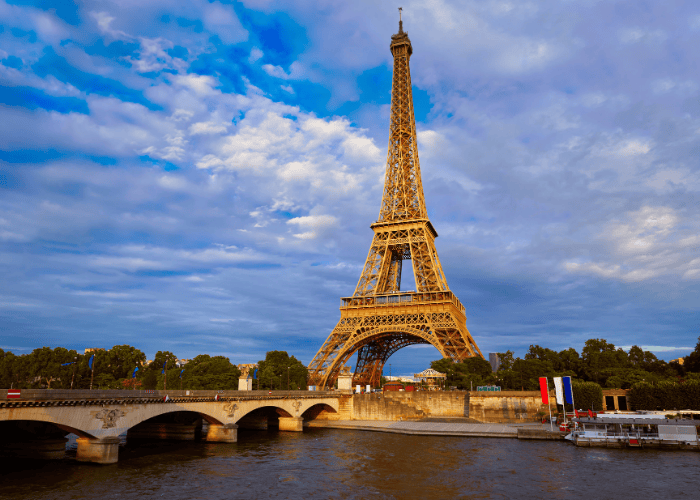
Get tickets to the Eiffel Tower in advance to avoid very long lines. The Eiffel Tower is open year round from 10:30 am to 6:30 pm (9:30 am to 11:45 pm from June 1 to September 1).
Arc de Triomphe
The Arc de Triomphe stands proudly in the middle of the Place Charles de Gaulle (formerly known as the Place de l’Étoile), oblivious to the traffic swirling around it. I know whereof I speak. In the days before Google Maps and GPS, we took a wrong turn and were swept into the Place Charles de Gaulle. Gregg had to circumnavigate the unusually large roundabout (twelve exits!) numerous times before finally crossing a frightening number of lanes to reach our exit. I still break out into a cold sweat when I think of that drive.
Begun in 1806, the Arc de Triomphe honors soldiers who fought in the French Revolutionary and Napoleonic Wars. Directly under the arch is the Tomb of the Unknown Soldier who was killed in World War I.
In Love Among the Recipes, Genna has a poignant reason for pairing the Tomb of the Unknown Soldier with Lamb Shanks with Caramelized Onions. Here is a recipe for a similar dish: Fall-Apart Lamb Shanks Braised with Mustard and Mint from the Serious Eats website.
You can wander around and under the Arc de Triomphe for free, but you’ll pay to climb the stairs to the top. The glorious view of the Place Charles de Gaulle, Champs-Élysées, the Tuileries, and the Eiffel Tower in the distance is well worth the price. WARNING: Don’t even think about trying to cross the Place Charles de Gaulle! Use the pedestrian tunnels located around its perimeter to lead you safely under the traffic.
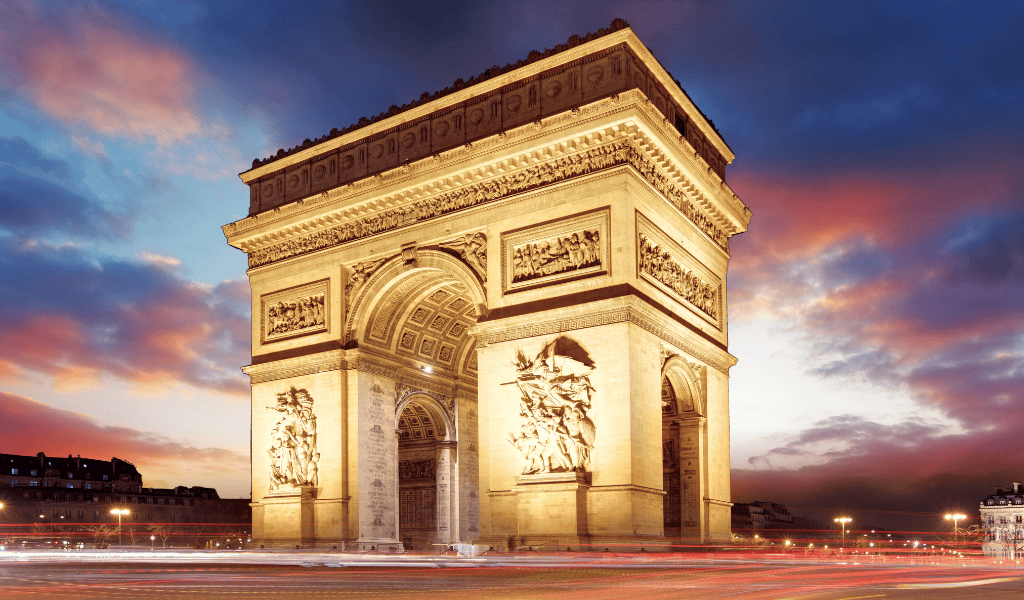
L’abbaye de Saint-Germain-des-Prés
Dating from the 6th century, the Abbey of Saint-Germain-des-Prés is the oldest church in Paris and contains some notable frescoes. The current church was built in the 12th century, with the distinctive spire added in the 19th century. The abbey is also where the heart of philosopher René Descartes is buried.
In Love Among the Recipes, Genna rents an apartment on the top floor of a building steps from the Abbey of Saint-Germain-des-Prés. I modeled her apartment on one I stayed in with my family in 1995. The needlepoint reproduction of La Grande Odalisque by Ingres that hangs in Genna’s apartment was inspired by a similar (and equally hideous) version that hung in the apartment we rented.
Close to the church are two famous cafés in which several scenes take place: Les Deux Magots and Café de Flore. While sitting at a table overlooking the church, Genna decides to pair it with a recipe for French Onion Soup. This version comes from My Parisian Kitchen.
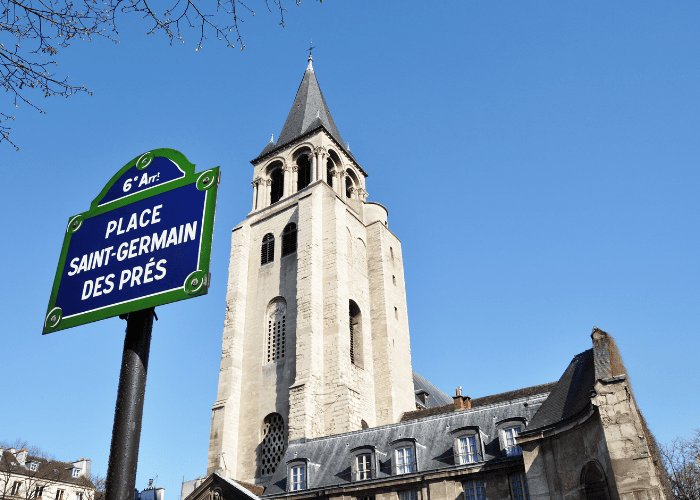
Les Invalides
Napoleon’s mammoth tomb and an impressive military museum (Musée de l’Armée) is housed in Les Invalides and is worth a look for Napoleon buffs.
When life starts to go sideways for Genna in Love Among the Recipes, she makes a tearful visit to her grizzled but kindly landlord and most loyal taste-tester. After pouring her heart out to him while savoring shots of fine Napoleon brandy, Genna pairs Les Invalides and its Napoleonic associations with Steak Diane Flambéed in Brandy. This recipe is created by Emeril Lagasse and comes from the Food & Wine website.
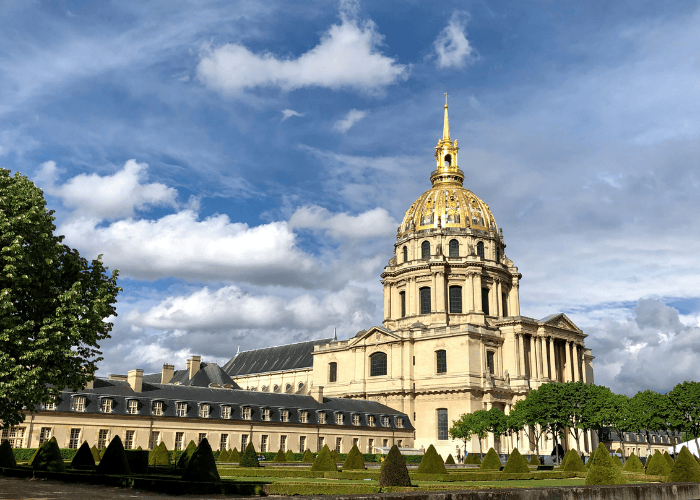
Les Invalides is open daily from 10 am to 6 pm, except for January 1, May 1, and December 25. Get priority entrance tickets here.
Notre-Dame Cathedral
The partial destruction of Notre-Dame Cathedral in 2019 broke the hearts of many cathedral lovers, including me. Some of my most memorable moments in Paris were spent in the vicinity of Notre-Dame. Several times, I attended music concerts in the cathedral and was blown away by the sublime sound and medieval atmosphere.
In Love Among the Recipes, which is set several years prior to the fire, Genna matches Notre-Dame Cathedral with Lemon Sole with Butter Sauce. Here’s the description she wrote for her cookbook/guidebook:
A visit to Notre-Dame Cathedral takes you into the heart and soul of France. Emerging from a recent cleaning, the cream-colored stone glows in the spring sunshine, much as it did when it was first built a millennium ago. The cathedral sits on an island in the middle of the Seine, until modern times the principal artery for commerce. For centuries, fish from the river nourished the well-fed clerics who kept the great cathedral running. From soul to sole, this recipe for grilled lemon sole swims in a light cream sauce made tart by thin slices of melted lemon. Serve with a fluffy rice pilaf studded with pistachio nuts for a heavenly experience.
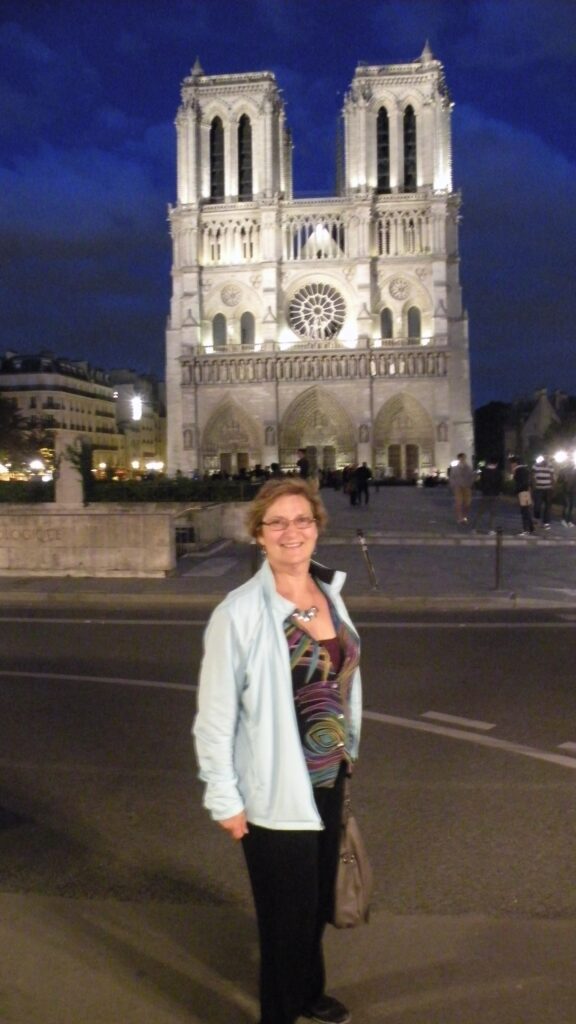
Rose Window in Notre-Dame Cathedral
The rose window at Notre-Dame Cathedral is one of Europe’s most stunning examples of Gothic stained glass. Miraculously, the rose window survived the 2019 fire. In Love Among the Recipes, Genna pairs a classic Strawberry Tart with the rose window. This recipe comes from Recipe Girl.
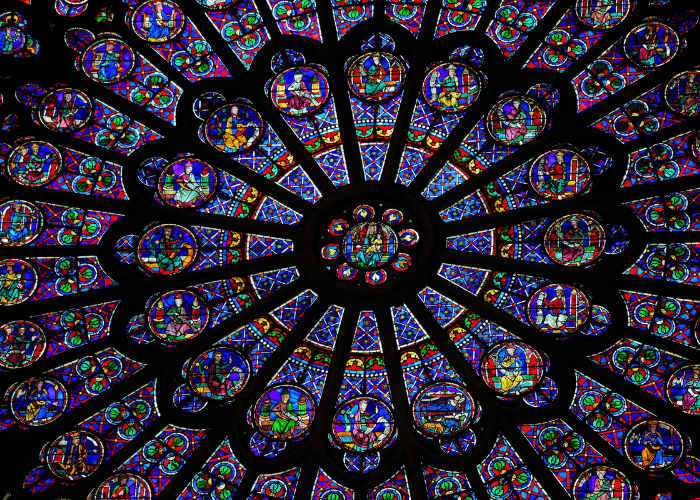
Sainte-Chapelle
Sainte-Chapelle on the Île de la Cité ranks as my all-time favorite religious structure. I first visited when I was 14 years old while on my epic trip around Europe with my mom, and I always pop in every time I’m in Paris. The joyful release I experience when stepping from the dark, winding staircase into the bright and airy stained-glass heaven of the upper chapel never gets old. I include Sainte-Chapelle in my post about the top cathedrals in Europe.
In Love Among the Recipes, Genna has a meltdown right in the middle of Sainte-Chapelle while she’s there with big, bluff Bill Turner who may–or may not–become a love interest. Later, while she and Bill enjoy a sumptuous lunch at a restaurant on the Île Saint-Louis, Genna matches Sainte-Chapelle with a Pavlova filled with Strawberries, Raspberries and Blueberries. This recipe comes from Sally’s Baking Addiction.
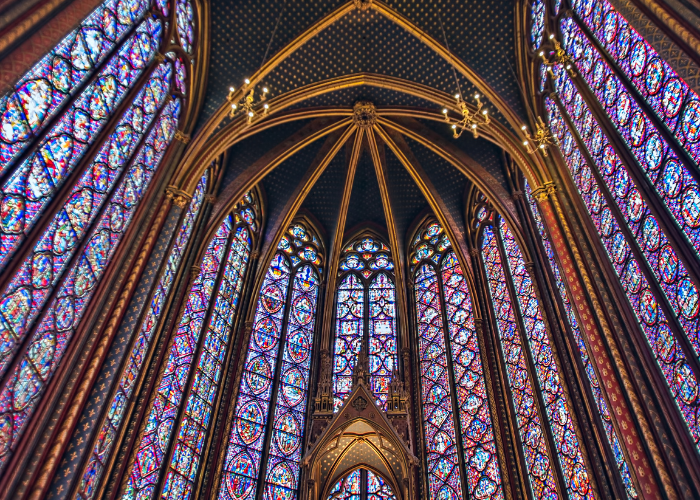
Sainte-Chapelle is open from 11 am to 7 pm and reservations are required. Get tickets for priority access.
Tour Saint-Jacques
Located in the 4th arrondissement, the Tour Saint-Jacques is a fabulous example of the flamboyant Gothic style. It was originally part of a church built in the 16th century which was destroyed during the French Revolution. I always enjoy catching sight of the statue-encrusted Tour Saint-Jacques while walking around the area. The tower’s connection to butchers (the original church was called Eglise Saint-Jacques-de-la-Boucherie) inspires Genna to pair it with homemade sausages.
Here’s an excerpt from Love Among the Recipes:
Genna liked the contrast of the ornate tower with the lowly sausage, a dish perfect for an everyday dinner. She could include directions for making the actual sausage. A homemade sausage made from freshly ground meats in the cook’s own kitchen and blended with a rich mix of seasonings was surely one of life’s great gastronomic pleasures.
Find a selection of homemade sausage recipes on allrecipes.com.
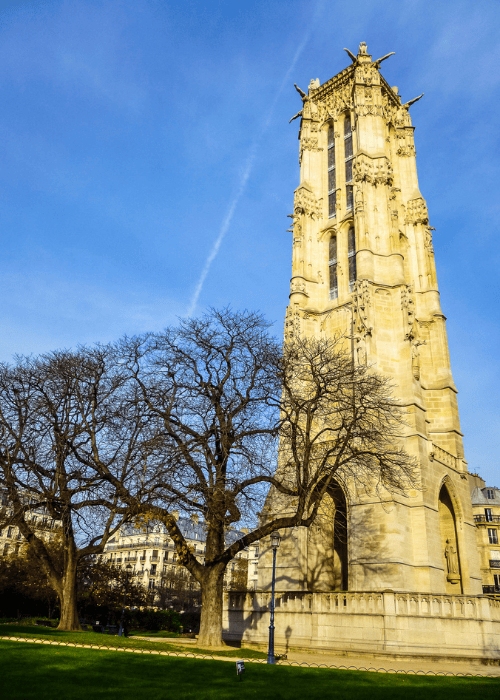
Museums in Love Among the Recipes
Musée de L’Orangerie – Monet’s Les Nymphéas
Viewing the eight giant canvases Claude Monet painted of the water lilies in his garden at Giverny never fails to exhilarate me. Two purpose-built rooms contain four canvases each. Stepping into the rooms is like stepping to the edge of a tranquil pond in a cool forest glade.
In Love Among the Recipes, the water lily paintings have a particularly dramatic effect on Marsha, a young woman whom Genna befriends from her French class. While Marsha blisses out in front of the paintings (collectively called Les Nymphéas), Genna settles onto a bench and thinks about Vichyssoise. Here’s what she writes:
Made with tender young leeks, pale yellow potatoes, heavy cream, and black pepper, a bowl of chilled Vichyssoise on a hot summer day will transport you to Monet’s world, where your soul receives the solace that only nature can supply.
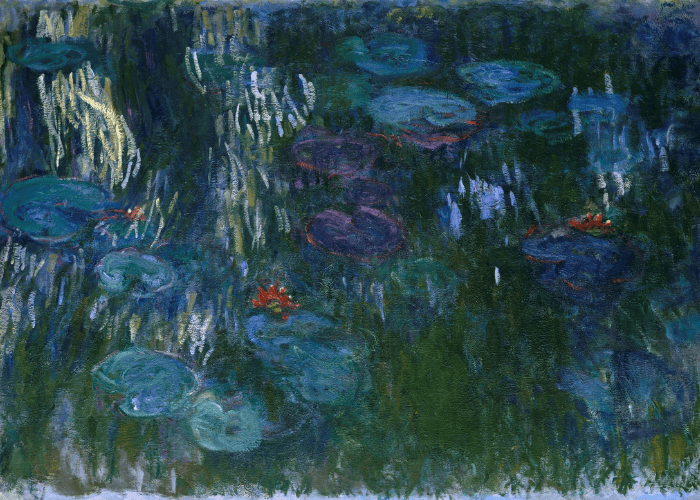
Musée de Cluny
As I’ve written in my post Paris for Art Lovers: Cool Art Museums You May Not Know, the Cluny (otherwise known as Musée national du Moyen Âge) is my favorite art museum in Paris. I spend at least a few hours of every trip to Paris wandering through the dark rooms overflowing with medieval treasures. That’s my idea of paradise–that and stopping for a glass of wine at a local bistro after my visit.
Genna also loves the Cluny, particularly the stunning Lady and the Unicorn tapestries. While enjoying coffee with Parisian hottie Pierre Leblanc, Genna’s description of why she paired the famous tapestries with Duck Confit comes replete with some seriously suggestive double entendres.
This recipe for Duck Confit to match with the Lady and the Unicorn tapestries comes from Serious Eats.

The sixth tapestry: À mon seul désir Photo: Wikipedia
The Cluny Museum is open every day except Monday from 9:30 am to 6:15 pm. Ticket office closes at 5:30 pm. Evacuation of the rooms begins at 5:45 pm.
Musée Delacroix
The Musée Delacroix is housed in Delacroix’s former home and is considered a rare gem in the heart of the 6th arrondissement. The collection includes over a thousand artworks by Delacroix along with objects that belonged to him, and artworks created by artists who admired him.
In Love Among the Recipes, Genna visits the Musée Delacroix the day before she hosts a dinner party for her new friend Marsha and Marsha’s insufferable boyfriend. She pairs the Musée Delacroix with a rich and flavorful Bœuf Bourguignon:
The idea for bœuf bourguignon came to her as she was touring rooms that once housed Delacroix’s living quarters and studio. When she thought of Delacroix, she thought of clutter and heat, of fallen soldiers and distressed maidens densely painted in browns and ochers and reds. Delacroix’s large canvases were too big, too full, too heroic—and a good match for the richness of a well-cooked bœuf bourguignon.
This recipe for Bœuf Bourguignon comes from Café Delites.
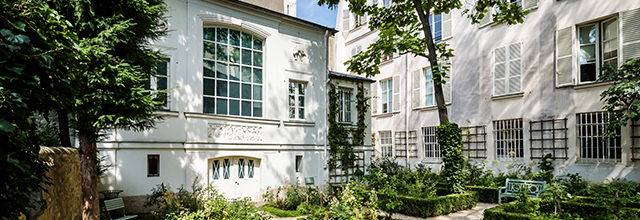
The museum is open Wednesday to Monday, from 9:30 a.m. to 5:30 p.m., with a night opening until 9 p.m. on the first Thursday of the month.
Musée d’Orsay
I never tire of visiting the Musée d’Orsay. It teems with masterpieces created between 1848 and 1914, and includes scores of great paintings by Manet, Morisot, Monet and more. Genna matches three recipes to various aspects of the venerable museum.
To avoid the crowds, buy your tickets in advance and go early in the day. Head first for the fifth floor so you can enjoy the most popular paintings accompanied by few visitors. Take your time wandering from room to room and then stop by the café behind the large clock–the original from when the Musée d’Orsay was a train station.
Musée d’Orsay as a Whole
When Genna visits the Musée d’Orsay with her daughter, Becky, she pairs cassoulet with the museum. She explains her choice to Becky, who has arrived unexpectedly in Paris, bringing with her an attitude and a secret:
“I was watching all the people crowding into the galleries and I couldn’t help thinking of them as so many ball bearings all rolling along together, one indistinguishable from the next. Then from there I went to beans—white haricot beans that are smooth and round and meaty. And from there, I thought of richness—the paintings, which led me to think of chunks of homemade garlic sausage and duck confit legs simmered in wild garlic and . . .”
“Stop!” Becky held up her hand. “I get the picture. The cassoulet mixes all kind of colors and textures with herbs and beans, just like the museum combines paintings and people.”
“Exactly!” At this rate, they’d start wearing matching stretch pants and pink T-shirts with Mother on one and Daughter on the other.
Here’s a recipe for cassoulet, a tasty recipe from southwest France, on Jo Cooks.
Mère et enfant sur fond vert, Musée d’Orsay
Becky is fascinated by the painting Mère et enfant sur fond vert by Mary Cassatt. Later in the novel, Genna pairs the painting with clafoutis, a delicious and simple fruit pudding suitable for serving to children.
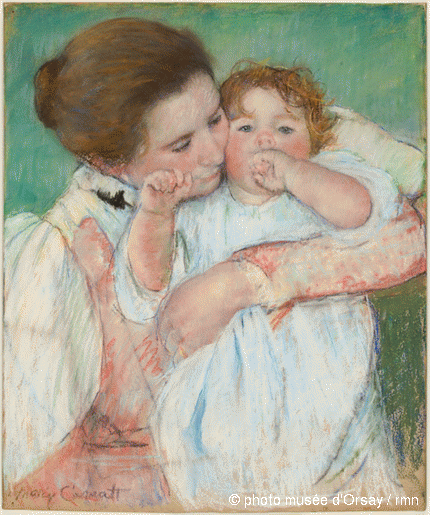
Great Clock at the Musée d’Orsay
Genna pairs the great clock that dominates the façade of the Musée d’Orsay with a classic French apple tart–a tarte aux pommes. This recipe for Apple Tart comes from My Parisian Kitchen.
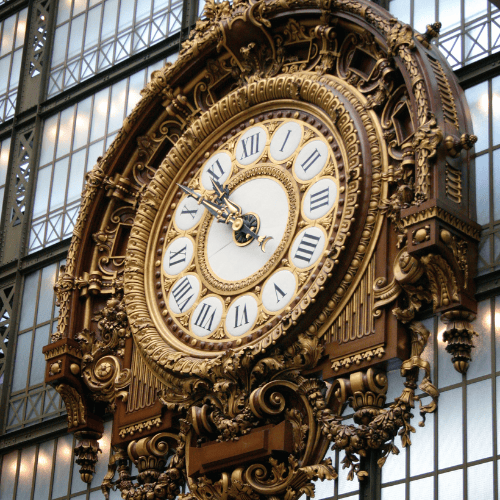
Make sure to buy tickets to visit the Musée d’Orsay in advance so you can skip the line-up. The museum is open from 9:30 am to 6 pm daily except Mondays.
Musée du Louvre
The Louvre is massive, over-crowded, expensive, and magnificent. The key to visiting the Louvre with ease is to focus on one or two areas at most. There’s a great deal of art in the Louvre, and while all of it is amazing, some pieces are more amazing than others.
In Love Among the Recipes, Genna pairs recipes with three different parts of the Louvre: the Denon wing, La Grande Odalisque by Jean-Auguste-Dominique Ingres, and a charming terra cotta piece from the antiquities exhibits in the Sully wing.
Denon Wing
When you enter the pyramid and descend the escalator to the center of the Louvre, you’re faced with three wings: Sully, Richelieu, and Denon. Most visitors make a beeline for the Denon wing because that’s where some of the most famous artworks in the world are displayed, including the Mona Lisa by Leonardo da Vinci. Unless you have a burning desire to stand in a massive crowd bristling with pickpockets so you can peer over the tops of heads to see a tiny, glass-enclosed painting on a single wall, I’d give Mona a miss. If you do want to see her, arrive early, or drop by just before the museum closes.
Instead, head for the far end of the Denon wing and work your way back. You’ll pass several remarkable pieces, including:
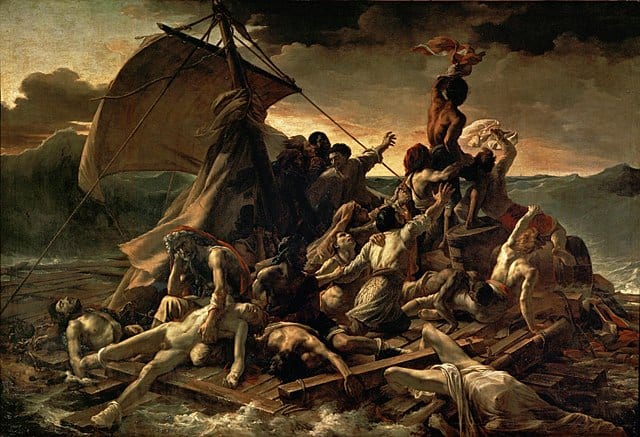
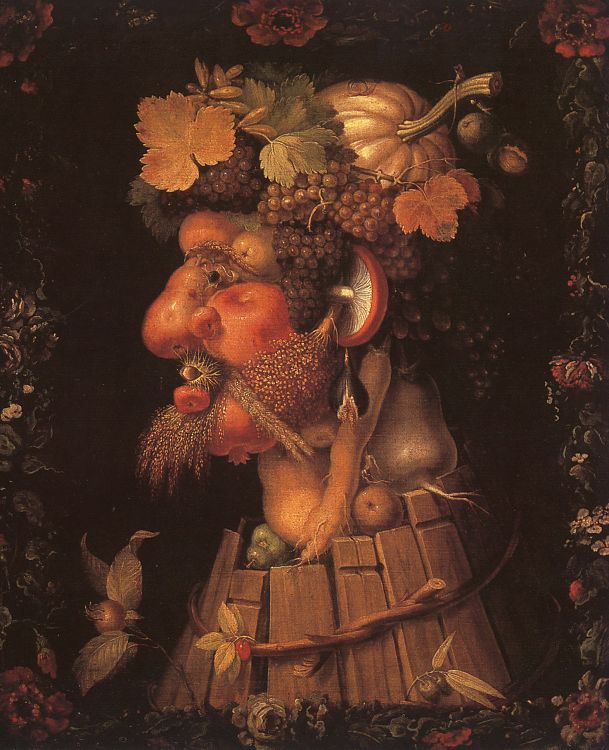
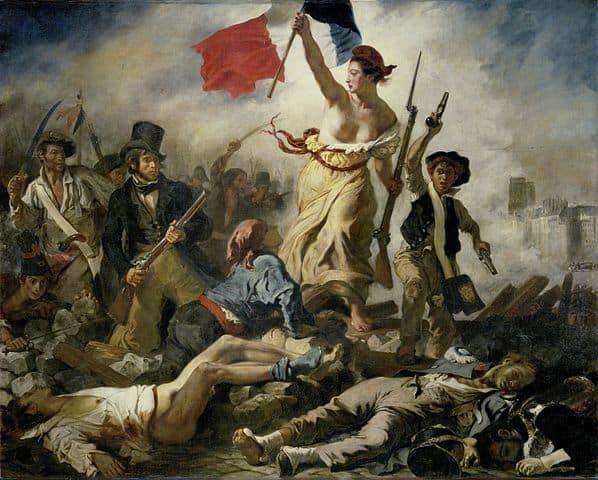
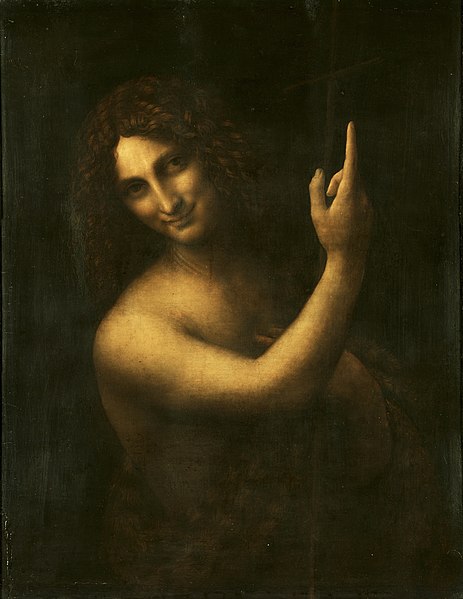
The rich, deep-red walls of the Denon wing inspire Genna to match it with a recipe for Shrimp-Stuffed Salmon. When she serves the dish at a party, the consequences are devastating–and a pivotal moment in Love Among the Recipes. Here’s a link to a recipe for a similar dish on Jamie Oliver’s website.
La Grande Odalisque by Ingres
Your stroll through the French masterpieces in the Denon wing also takes you past La Grande Odalisque by Ingres. The enigmatic image of the nude courtesan plays a prominent role in Love Among the Recipes. In one of the final scenes of the novel, Genna matches the painting with a recipe for tagine–a warm and spicy Moroccan dish of lamb cooked with apricots and nuts. This recipe for Tagine and Couscous comes from Easy Peasy Foodie.
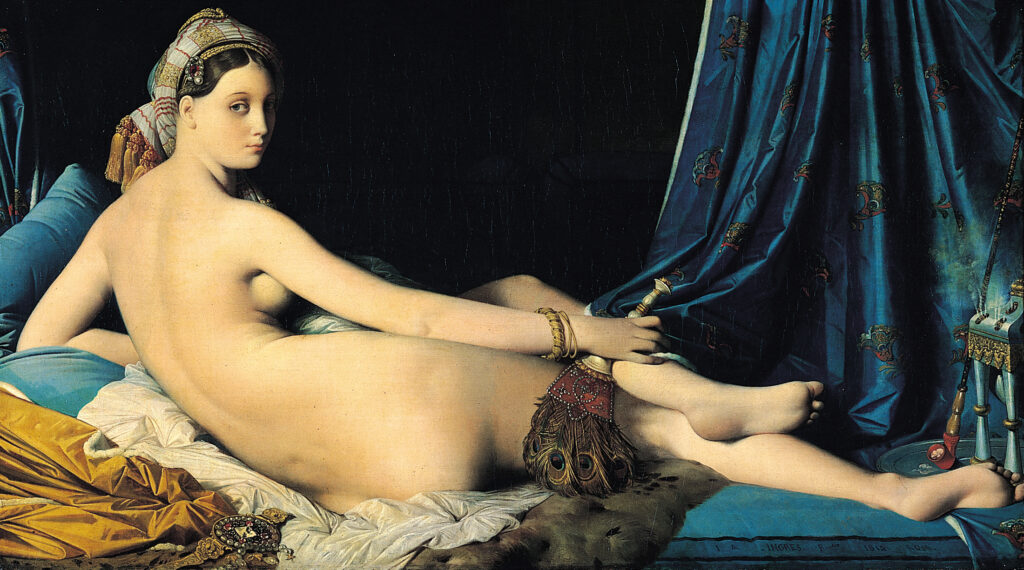
Greek, Roman, and Egyptian Antiquities
While perusing the fabulous collection of antiquities in the Sully wing, Genna comes across a small terra-cotta carving depicting a row of bakers:
Genna trailed past glass cases brimming with cooking pots and spear tips, wrought gold bracelets and bronze helmets. Her attention was arrested by a roughly hewn terra-cotta piece showing a row of figures seated at a bench, kneading what appeared to be dough. Thanks to her progress in French class, she easily deciphered the description. The object represented bakers making bread. The preparation of food was rarely represented in art, and almost never in the art of antiquity. Genna tried to imagine the artisan who had sculpted the little piece and for what reason. It was neither well-formed nor beautiful. A child with Plasticine could have done better. But at over 2,500 years old, the piece was remarkable.
The row of bakers inspires Genna to develop a recipe for a heavy country loaf–the kind of bread made for mopping up a thick stew on a frosty night. This recipe for a country loaf of bread studded with walnuts and figs comes from Dinner with Julie.
Take virtual tours of the Louvre. Make sure to buy tickets to visit the Louvre in advance so you can skip the line-up. The museum is open from 9 am to 6 pm daily except Tuesdays.
Quai Branly Museum
Also know as the Musée du Quai Branly Jacques Chirac, the Musée Quai Branly deserves a place on your Paris itinerary, particularly if you enjoy art and objects created by indigenous cultures from around the world. The collection is displayed in four distinct areas representing Africa, Asia, Oceania, and the Americas. Read more about the Musée du Quai Branly in my post Paris for Art Lovers: Cool Art Museums You May Not Know.
Genna visits the Branly with Becky, just after Becky inadvertently shares news of a seriously life-altering event. While prowling the dimly lit exhibits, Genna decides on a recipe for Chocolate Mousse. This one comes from My Parisian Kitchen.
Here’s what Genna writes:
No one who has gazed awestruck at an intricately carved exorcism mask from Sri Lanka or the complex geometric rugs woven by Berber tribeswomen could doubt that the objects on display in the Musée du Quai Branly represent human ingenuity in all its diverse glory. Intrepid visitors glide from the Congo to the Sahara, across India and around Polynesia, into the vast lands of Asia and on across the Pacific to the plains of North America and the secret jungles of Brazil. A delicately constructed chocolate mousse should explode with flavor with the same intensity so richly captured in the Branly’s dark passageways.
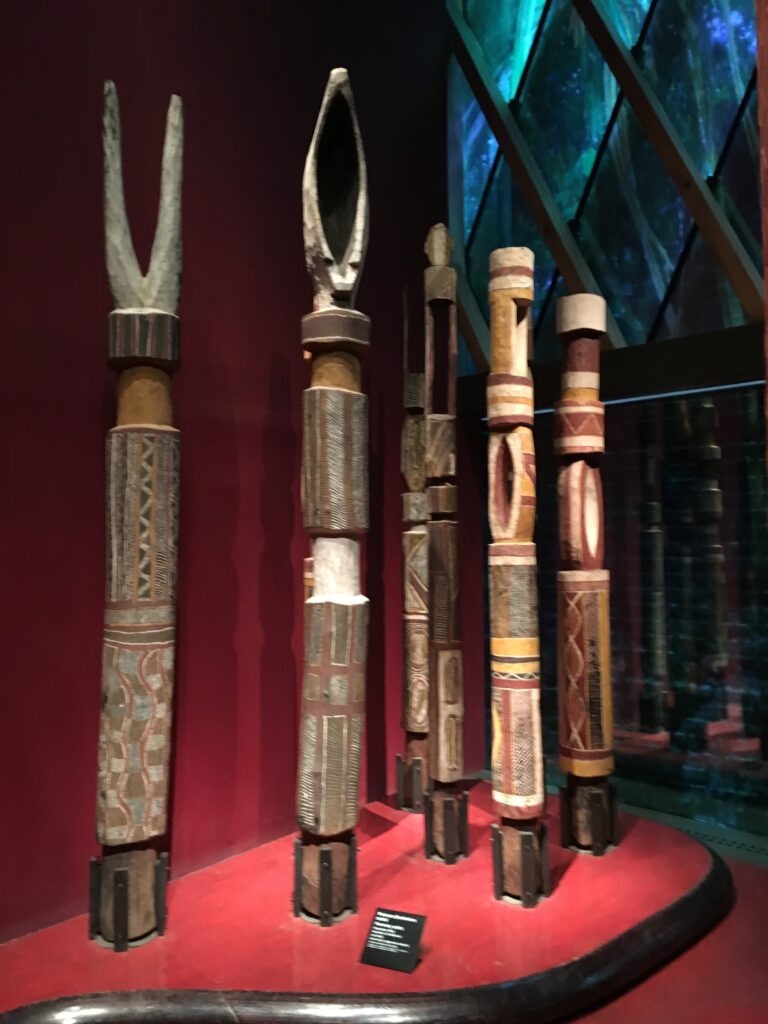
The museum is open Tuesday to Sunday from 10:30 am to 7:00 pm (Thursdays until 10:00 pm). Get tickets in advance to avoid lines.
Musée Picasso
The Musée National Picasso-Paris draws from over 5,000 works in a comprehensive collection that includes paintings, sculptures, and engravings. Read more in my post Paris for Art Lovers: Cool Art Museums You May Not Know.
Situated in the trendy Marais district, the Musée Picasso is close to the apartment Marsha buys in Love Among the Recipes. When Marsha takes Genna to see the apartment, Genna is bowled over by its size and elegance, while poor Marsha is distraught.
Genna pairs a recipe for bouillabaisse, the classic Mediterranean fish stew, with the museum devoted to the work of Picasso, who was born in Málaga on Spain’s Mediterranean coast. Her decision to include bouillabaisse in her cookbook/guidebook prompts her to host a dinner party for the new friends she’s made in Paris. The events at this party lead to the climax of the novel.
This recipe for Bouillabaisse comes from Serious Eats.
The Picasso Museum is open Tuesday to Friday from 10.30 am to 6 pm and weekends from 9.30 am to 6 pm. The museum is popular, so buy tickets in advance.
Musée Rodin
The classy and manageable Musée Rodin in the 7th arrondissement is another one of my favorite small art museums in Paris. Read more in my post Paris for Art Lovers: Cool Art Museums You May Not Know.
When Genna visits the Musée Rodin, she is entranced by the many large and small versions of Rodin’s famous Kiss sculpture and by the sophisticated beauty of the museum and its grounds. She contemplates The Thinker, admires the sculptures in the sumptuously appointed chandeliered rooms, and comes up with crème brûlée to match with the museum. Here’s what she writes:
A silky crème brûlée topped with a sheen of caramelized sugar cracked open by one smart rap of the spoon made the perfect ending to a meal. It combined hard and soft together in one dish, like one of Rodin’s sculptures. The cold marble came alive with the heat generated by the two bodies wrapped around each other. What looked solid became malleable and alive.
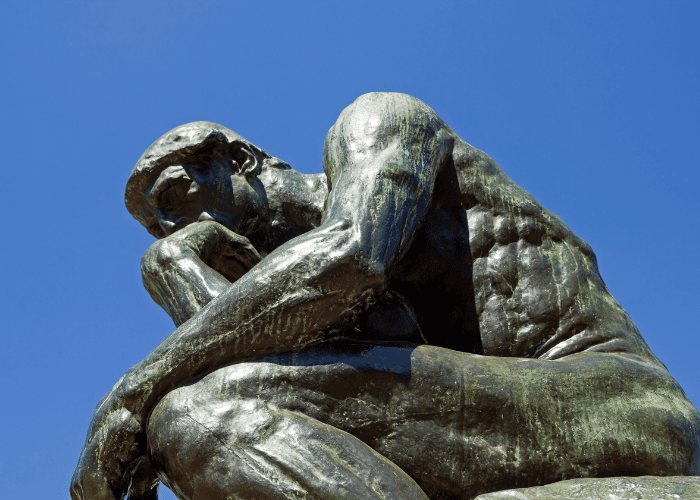
The Musée Rodin is open Tuesday to Sunday from 10 am to 6:30 pm. Buy tickets in advance and skip the lines.
Pompidou Centre
The fourth floor of the Pompidou Centre houses an incredible collection of early-to-mid-20th-century modern art. It’s one of my husband Gregg’s favorite art museums. As a painter, he loves admiring the work of the artists who have inspired him–from Max Ernst to Matisse to Pollock.
In Love Among the Recipes, Genna pairs the Pompidou Centre with the canapés she serves at her climactic dinner party. Tapenade Noire comes from My Parisian Kitchen, Anchoïade from Serious Eats, and Grapes Stuffed with Goat Cheese from Food52.
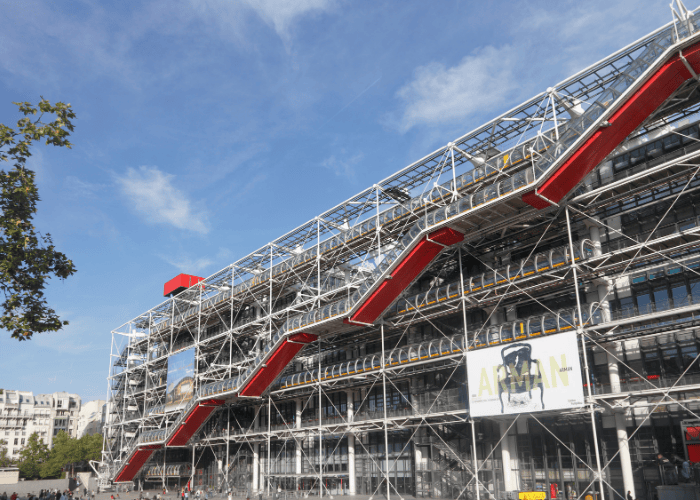
Buy tickets to the Pompidou Centre in advance to avoid line-ups, open every day except Tuesdays from 11 am to 8 pm.
Stravinsky Fountain, Centre Pompidou
Adjacent to the Pompidou Centre is one of the most striking and fun fountains I’ve ever seen. Created by Niki de Saint Phalle, the Stravinsky fountain was a huge favorite with my daughter, Julia, when she was a child.
In Love Among the Recipes, Genna remembers her own children enjoying the fountain:
Immediately before her rose the whimsical Stravinsky Fountain—a favorite of her children on their family trip to Paris. Sixteen sculptures, including a treble clef, a pair of swollen red lips, and various brightly painted amorphous shapes, rotated, swiveled, and shot water at odd angles. Genna defied anyone to stand next to Niki de Saint Phalle’s extraordinary creation on a hot summer’s day and not smile.
The quirky, colorful cheeriness of the Stravinsky Fountain inspires Genna to pair it with a scrumptious fruit flan that she describes as: Slices of yellow peaches, green kiwis, and creamy white pears, glistening blueberries, and rosy-red strawberries and raspberries and cherries would be arranged in perfect spirals on top of a custard filling spread over a crunchy sugar crust, the whole creation bathed in a glaze of equal parts sherry and Cointreau.
This recipe for fruit flan comes from House of Nash Eats.
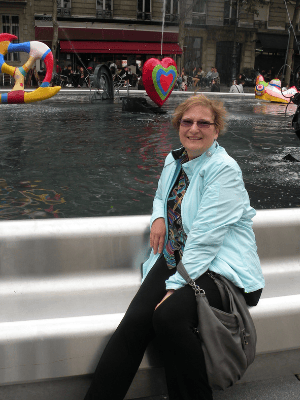
Parks in Love Among the Recipes
Les Jardin des Plantes
The Jardin des Plantes in the 5th arrondissement is a marvelous place to spend an afternoon. If you enjoy prowling through natural history museums (as I do), then allocate a day to explore the Gallery of Evolution, the Gallery of Mineralogy and Geology, the Gallery of Paleontology and Comparative Anatomy, and the Gallery of Botany.
Genna’s recipe for Leeks Braised in Wine to pair with the Jardin des Plantes comes from Serious Eats.
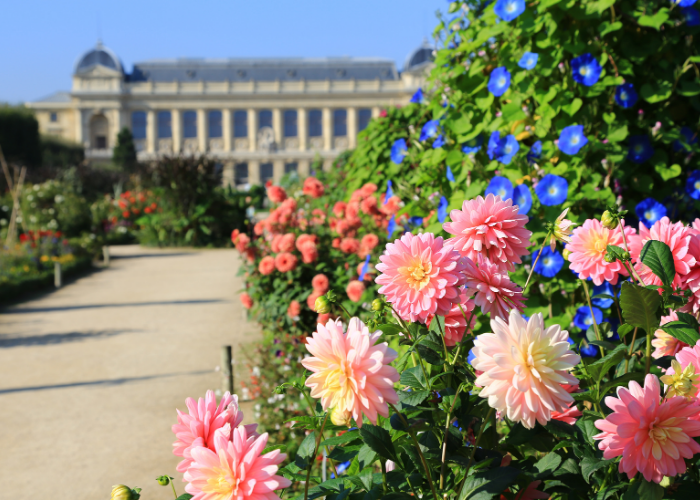
Le Jardin des Plantes is open from 7:30 am to 6:30 pm, with most of the galleries opening at 10 am.
Luxembourg Gardens
The Luxembourg Gardens holds a special place in the hearts of my family. We spent many happy hours at the awesome playground when our daughter was young, and in recent years have always enjoyed strolling through its shaded walkways and lounging by the round pool.
Genna also has very positive associations with the Luxembourg Gardens and goes there with her daughter, Becky. The variety of facilities within the gardens inspire Genna to create a recipe for pot-au-feu.
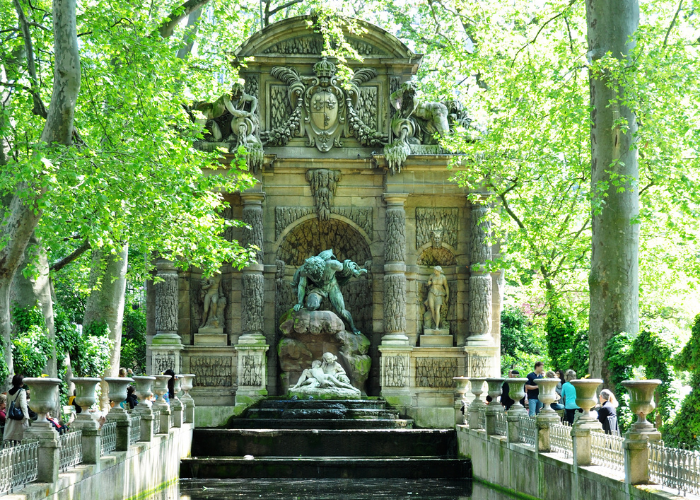
Monet’s Garden at Giverny
An hour outside Paris is Giverny and the house that artist Claude Monet lived in for several decades. The garden he created–depicted in many of his paintings–attracts millions of visitors every year.
In Love Among the Recipes, Genna visits Giverny with Bill Turner. The first glimmer of romance is sparked amid the leafy green walkways and dreamy views of water-lily-studded ponds. While gazing over one of these ponds, Genna decides on a light and fluffy asparagus soufflé. This recipe comes from Simply Recipes.
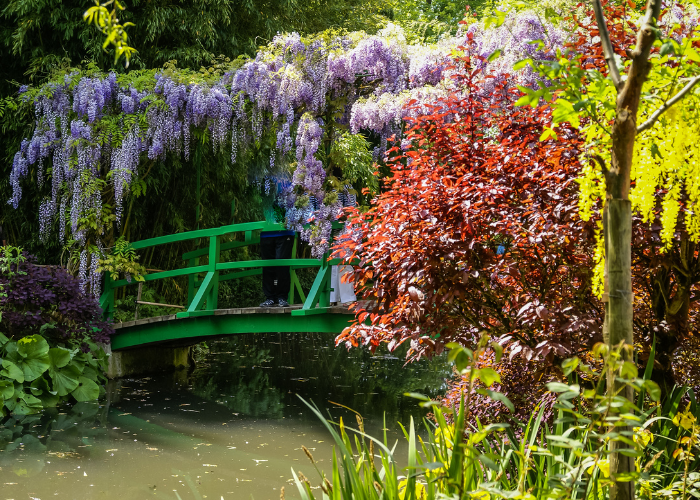
Parc Buttes Chaumont
This wonderful neighborhood park in the 19th arrondissement is the fifth largest park in Paris and almost completely bypassed by tourists. Wander several kilometers of pathways and admire the evocative Temple de la Sibylle perched on a cliff overlooking the lower garden.
In Love Among the Recipes, Genna pairs the park–a favorite with families–with a family-friendly recipe for Chicken & 40 Cloves of Garlic that she serves to an appreciative Monsieur Leblanc, her landlord. This version comes from Jo Cooks.
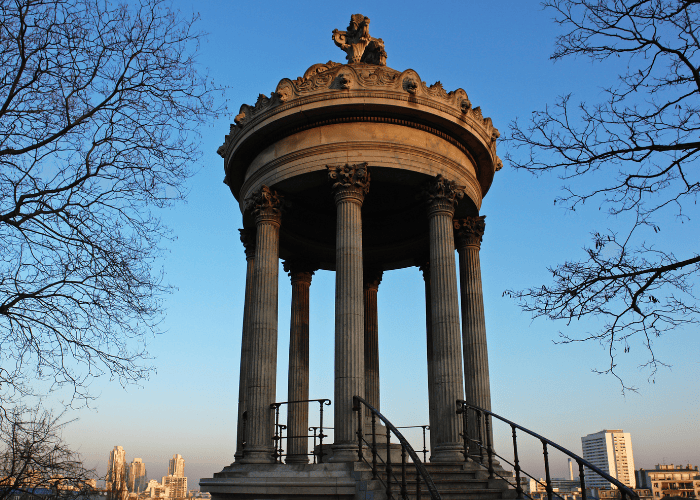
Parc de la Villette
This massive park, also in the 19th arrondissement, is full of interesting things to see and do. It’s home to one of the largest concentrations of cultural venues in Paris, including the Cité des Sciences et de l’Industrie, Europe’s largest science museum; three major concert venues, including the Philharmonie de Paris; and La Géode, an Omnimax theater. Also in the park are ten themed gardens, including the Jardin du Dragon, along with 26 follies–large, bright red metal sculptures.
In Love Among the Recipes, Genna visits Parc de la Villette with Pierre Leblanc and later tells him she’s pairing the park with a Pork Terrine with Roasted Red Peppers and Hazelnuts. Here’s an excerpt from her conversation with Pierre:
“A layered terrine of pork pâté with roasted red peppers and a layer or two of nuts all pressed into a perfect rectangle. When you cut the terrine into thick slices, all the layers are exposed.”
“Like the structures of the park in nature.”
“Exactly!” Genna put down her fork and grinned at Pierre. “You are an amazing inspiration, Pierre. That’s the second good connection I’ve made, thanks to you.”
This recipe for a pork and hazelnut terrine comes from BBC Food.
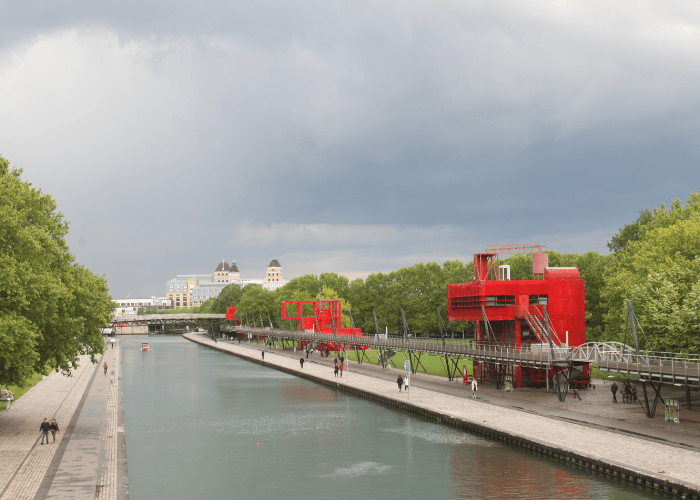
Parc Monceau
This delightful park in the 8th arrondissement contains a number of interesting follies, including a miniature ancient Egyptian pyramid, a Roman colonnade, antique statues, a pond full of water lilies, a Dutch windmill, a minaret, and an enchanted grotto. Far off the tourist path, the Parc Monceau is the perfect place for an after-lunch stroll.
In Love Among the Recipes, Genna pairs Parc Monceau with Coq Au Vin, a classic dish to match the classic elements in the park. This recipe comes from Jo Cooks.
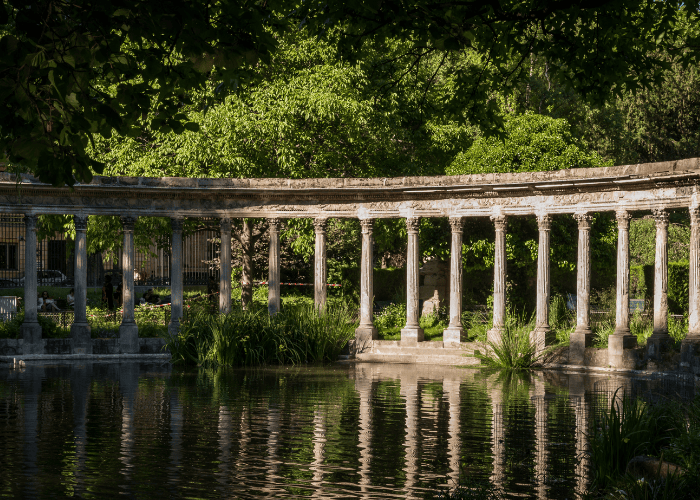
Miscellaneous Sights in Love Among the Recipes
Paris Métro
The Paris Métro is efficient, fast, and cheap. You can’t beat it as the quickest way to cross the city when you don’t want to take a taxi driven by a French driver with a death wish. If you have more time to get where you’re going, take busses so that you can watch the passing parade of Parisian sights and people. But if you’re in a hurry, descend to the Métro, check your route on the illuminated maps, and enjoy the ride.
While waiting in the Métro, Genna is struck by its relationship to the humble pissaladière, a pizza-like flatbread criss-crossed with anchovies and studded with olives. This recipe comes from Serious Eats.
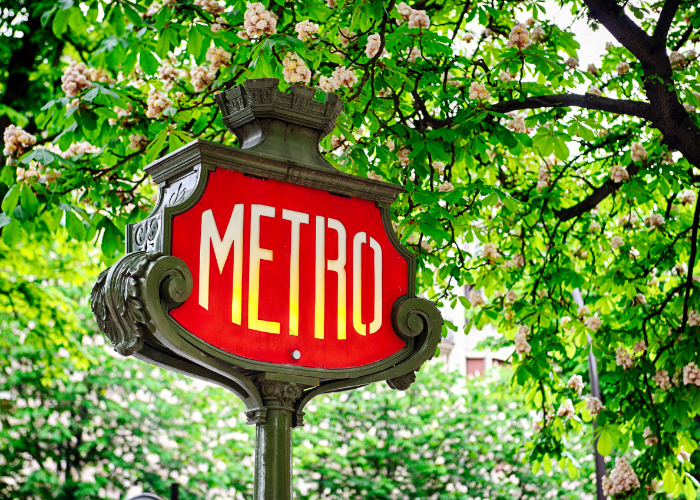
Île de la Cité
Before fire devastated Notre-Dame Cathedral in 2019, one of my favorite things to do on a warm evening was to stroll around the magical Île de la Cité. Repairs to the cathedral are progressing, but we likely won’t see the cathedral in all its floodlit glory for quite some time.
In Love Among the Recipes, Genna pairs Île de la Cité with Rainbow Trout as a result of a tip from the irascible but kind-hearted and seriously committed foodie, Monsieur Leblanc. The recipe is from Dinner with Julie.
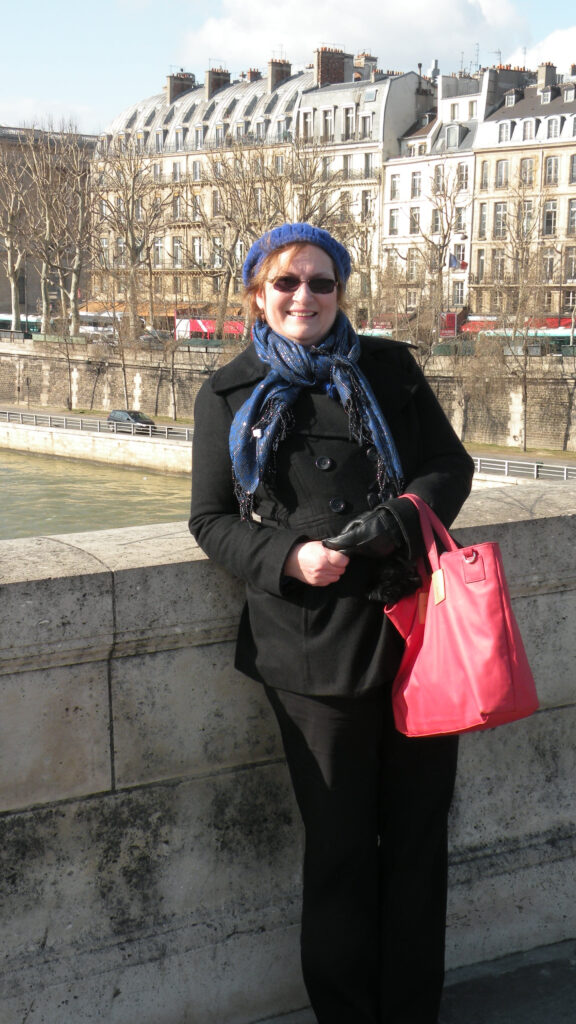
L’Opéra Bastille
I was fortunate to see a performance of Wagner’s Götterdämmerung at L’Opéra Bastille a few years ago. A remarkable structure, the opera house in the Place de la Bastille in the 12th arrondissement was inaugurated in 1989 and is the home of the Paris National Opera.
In Love Among the Recipes, Genna is inspired by the wrapped and layered exterior of the opera house to create a recipe for veal cutlets in parchment (Escalopes de veau en papillote).
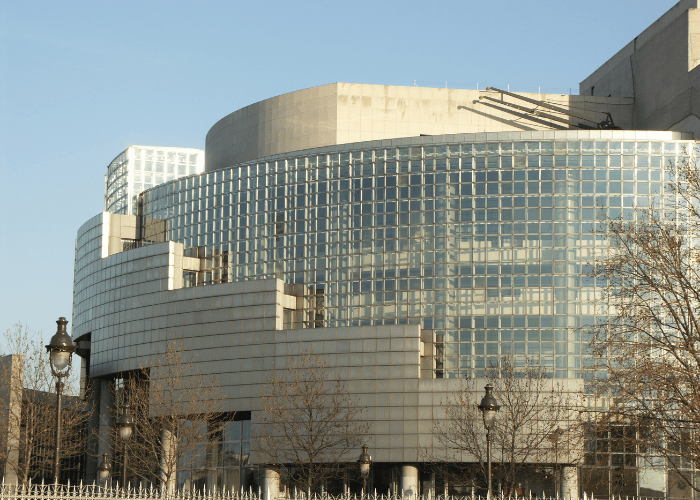
Les Halles
Back in the day (and as recently as 1971), Les Halles was Paris’s central fresh-food market. Now, the market is part of a massive underground shopping mall. Les Halles is usually an area I traverse through long tunnels when changing lines at the Châtelet–Les Halles Métro stop. It’s one of the largest underground stations in the world that connects three of five RER lines and five of the sixteen Métro lines.
Thanks once again to the refined palate of Monsieur Leblanc, Genna pairs Les Halles with a recipe for Rabbit in Mustard Sauce.
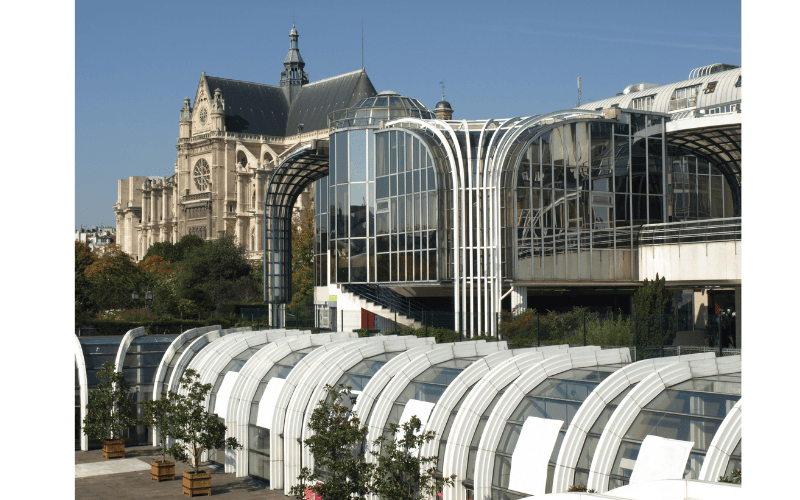
Montmartre
Montmartre overlooks Paris atop a large hill in the 18th arrondisement. It’s dominated by the ice-cream-cone domes of the Basilica of the Sacré-Cœur and includes plenty of charming cafés and an artsy atmosphere. However, each time I’ve visited, the crowds have been intense and so I usually haven’t stayed long. On the other hand, the views across the Paris skyline from Sacré-Cœur are magnificent, and I do remember our daughter at the age of nine enjoying the carousel at the base of the basilica.
In Love Among the Recipes, Genna pairs Moules Marinières with Montmartre. This recipes comes from Serious Eats.
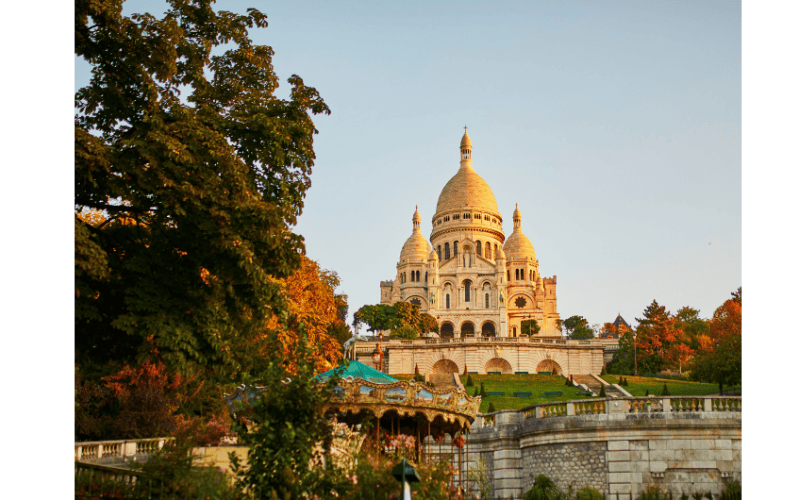
Place du Tertre in Montmartre
The Place du Tertre teems with sidewalk cafés, street artists, locals, and tourists. At the beginning of the 20th century, the area was home to many famous painters, including Picasso and Modigliani. The home and studio of Renoir and Suzanne Valadon are also nearby.
The lively and cheerful area is a perfect match for macarons–the crispy, chewy, gloriously colorful confections that take pride of place in every French patisserie. This recipe comes from Serious Eats.
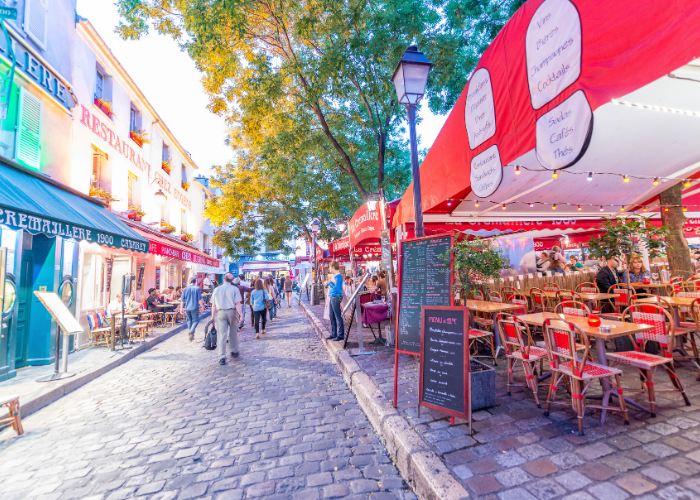
Place de la Concorde
The busy Place de la Concorde symbolizes monumental Paris. Stand in the middle of it and you can see many of the most famous sites in Paris, from the giant Ferris wheel to the Egyptian obelisk to the Eiffel Tower in the distance. Genna chooses the elegant French cookies called madeleines to pair with the Place de la Concorde.
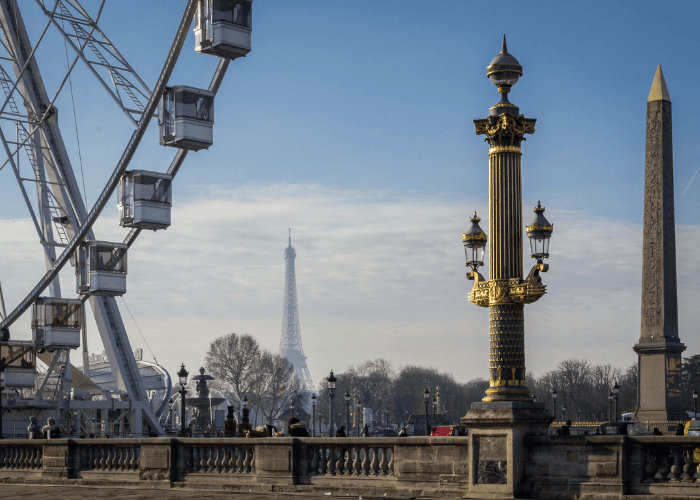
Tuileries Gardens
After trudging through the Louvre in search of great art, nothing beats taking some “me” time in one of the metal chairs arranged around fountains in the Tuileries Gardens. The flower beds overflow with color, the crowds swish past, and all is right with the world.
In Love Among the Recipes, Genna and Bill relax in the Tuileries before heading across the river to the Right Bank and Bill’s posh hotel on the Rue Saint-Honoré. Before they leave the gardens, Genna matches the Tuileries Gardens with Salade Niçoise, a hearty salad brimming with fresh anchovies, hard-boiled eggs, green beans, tuna, tomatoes, and potatoes. As Genna says, “every bite is a new combination of salty and crunchy.” This recipe comes from Serious Eats.
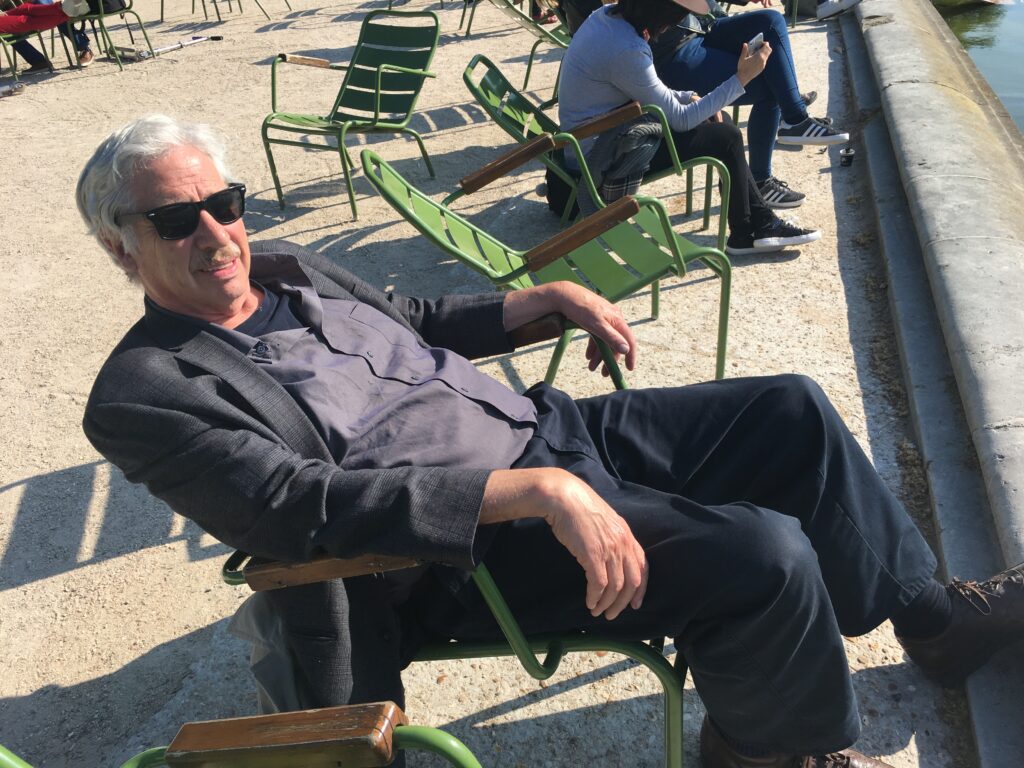
Versailles
Versailles, the sumptuous palace of French kings and queens, is worth the day trip from Paris, but arrive early to avoid the crowds! Tour the palace first and then spend the rest of your time wandering around the grounds. You can easily walk all day and not come close to exploring all 2,000-plus acres of what is considered the world’s largest royal domain.
I find the interior of Versailles too over the top and opulent for my taste, but it is worth seeing. I remember experiencing terrible claustrophobia trapped in a heaving mass of tourists in the famous Hall of Mirrors, which is why I suggest getting to the palace as soon as it opens. Outside the palace, the grounds and fountains are truly spectacular. Schedule your visit on a day when the fountains are playing. Check the Versailles website for times.
Genna visits Versailles with Pierre Leblanc, and together they come up with Caesar Salad as the perfect dish to pair with the royal residence. This recipe comes from Serious Eats.
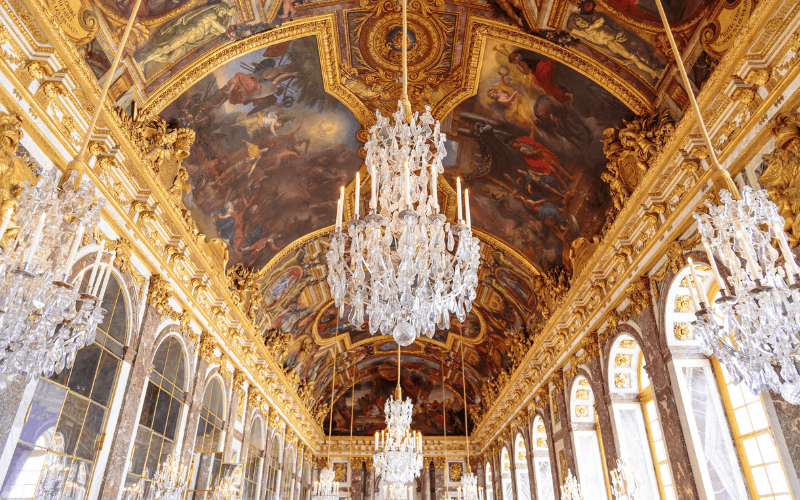
Book your tickets well in advance and skip the line for the Palace of Versailles. The Palace is open every day except Monday from 9 am.
Have you read Love Among the Recipes? Share your thoughts in the Comments section below.
